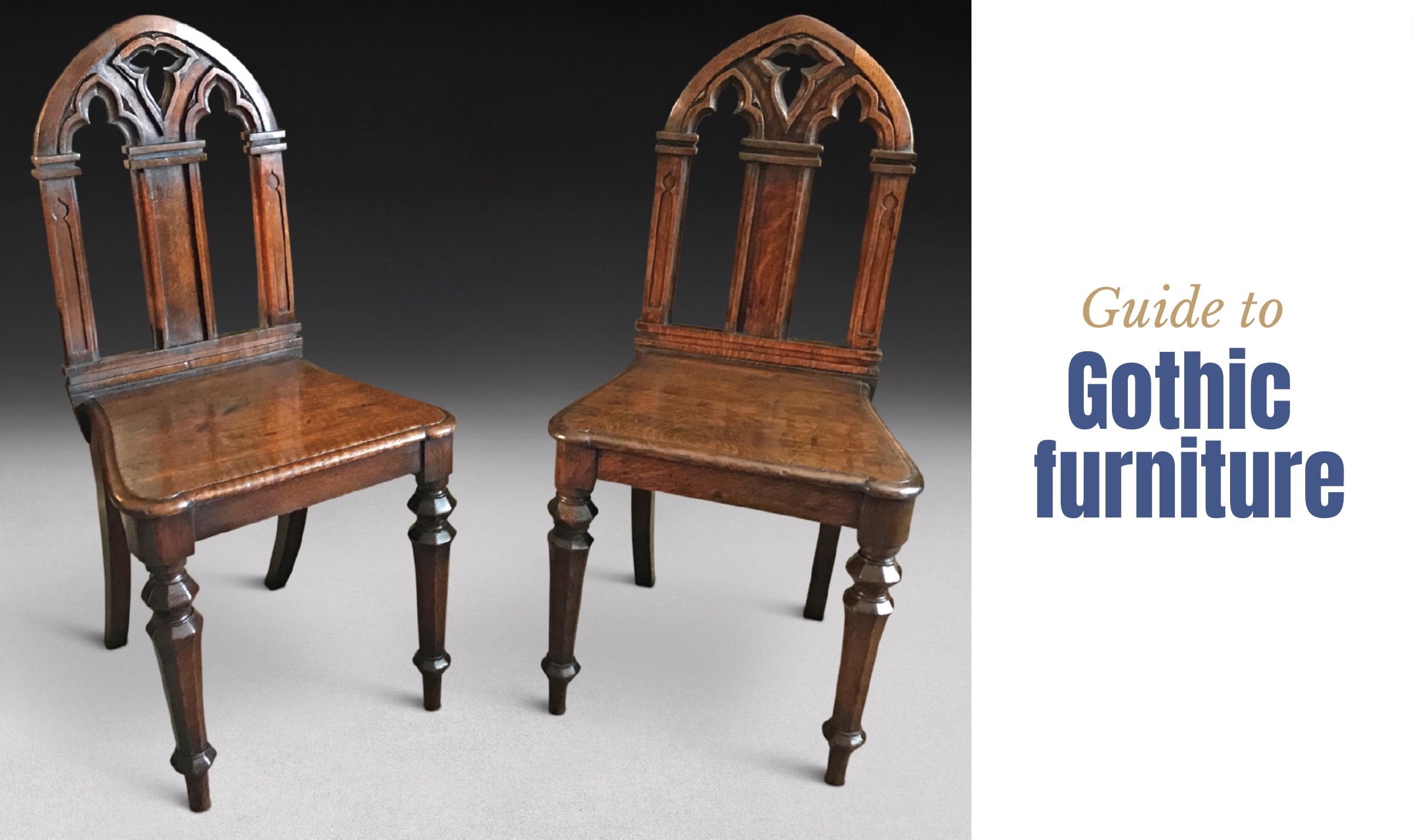#guide #gothic #furniture #Antique #Collecting
 Oxfordshire antiques dealer and expert David Harvey presents his guide to gothic furniture introducing two very special hall chairs in the celebrated style
Oxfordshire antiques dealer and expert David Harvey presents his guide to gothic furniture introducing two very special hall chairs in the celebrated style
Gothic Style
When I acquired this delightful and very stylish pair of hall chairs it re-kindled my appreciation of the gothic taste, which lasted in Britain for several centuries.
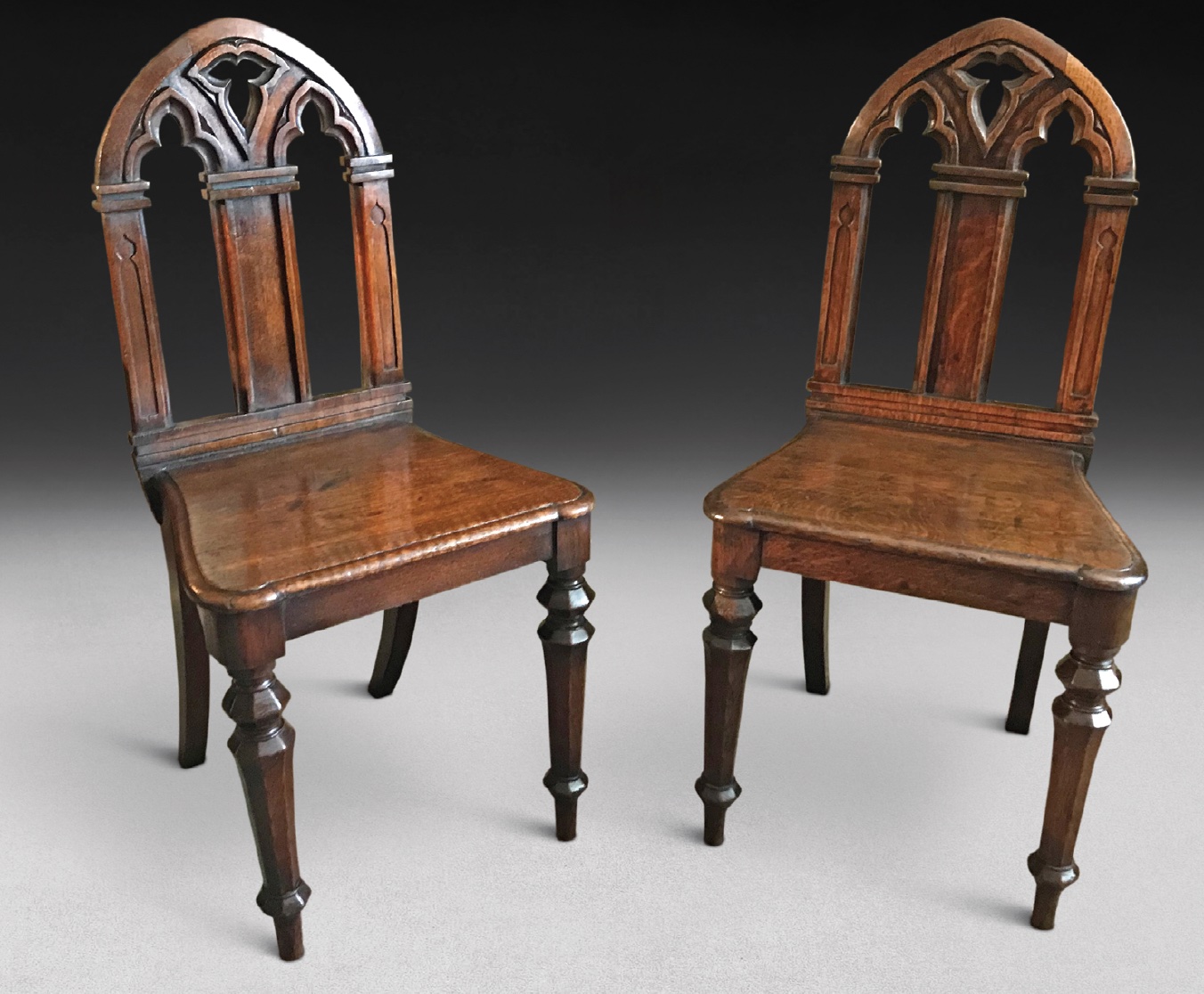
The gothic style of architecture and art originated in the Middle Ages and was prevalent in Europe between the mid- 12th century and the 16th century. It was heavily ornate and conceptual, with its architecture characterised by high buildings, intricate aesthetics, cavernous spaces and expansive walls.
The name “gothic architecture” originated as a derogatory term coined by the Italian architect, painter and writer Giorgio Vasari (1511-1574). Writing in 1550, he used it to describe the “barbarous German style” of northern European architecture for which he blamed “the Goths” for replacing ancient buildings for the much-hated style.
Buildings were introduced with pointed arches, flying buttresses, trefoils and a much more perpendicular style. This change meant the ceilings and roofs could be much higher and towers much taller.
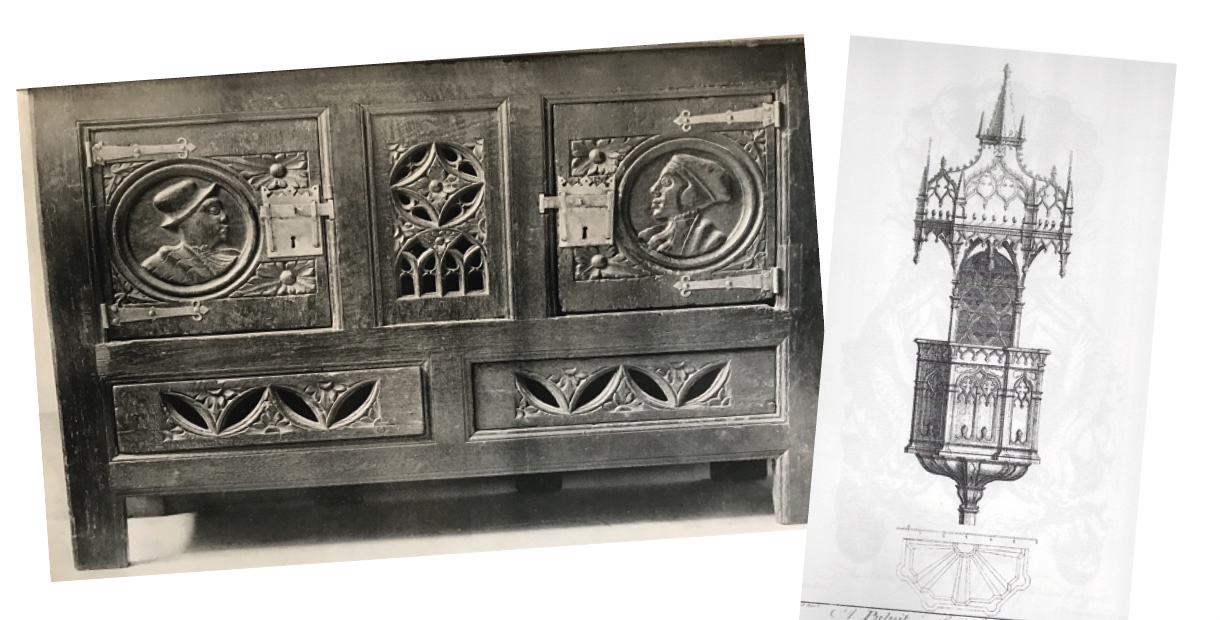
Gothic furniture
Over the centuries there have been several revivals of the gothic taste reflected in the furniture of the day. I came across this illustration (above) of a 16th-century oak hutch or food cupboard in Percy Macquoid’s History of English Furniture: Age of Oak volume 1, in which he dates it to about 1525.
The centre panel clearly shows the gothic influence and can be seen in many pews, screens and coffers in gothic cathedrals and churches throughout the country.
As we move into the early 18th century a number of architects and designers continued to use the gothic style in order to secure commissions which became the accepted style for places of worship of the day, as we see in William Kent’s drawing of a pulpit in the Cathedral at York 1737–1740).
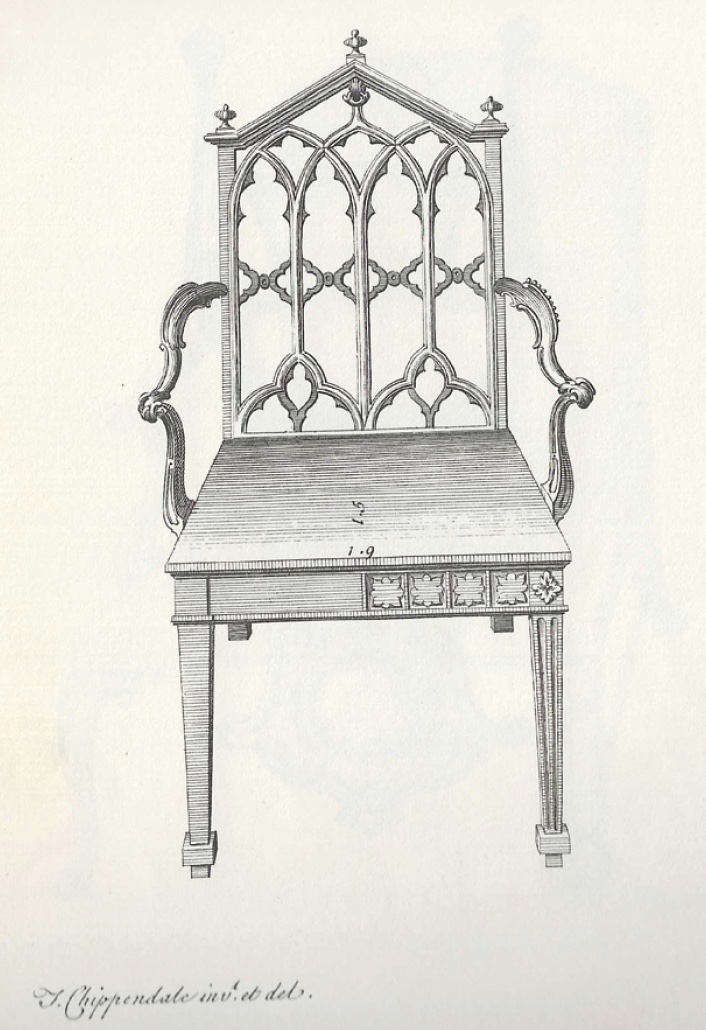
Chippendale’s gothic designs
The enduring popularity of the style can also be seen in the middle of the 18th century in the designs of the renowned furniture maker Thomas Chippendale. His celebrated The Gentleman and Cabinet-maker’s Director published in 1754 catalogued 160 designs that could be built for clients, or that other cabinetmakers could copy.
It included a number of gothic icons in numerous designs. The plates showing hall chairs are described by him as: “Six designs of chairs for halls, passages or summer-houses. They may be made either of Mahogany or any other wood and painted and have commonly wooden seats.”
Regency revival
The later years of the 18th century were characterised by the neo-classical style so much favoured by Robert Adam. But by the time we get into the Regency period, we see a very strong resurgence of the gothic taste.
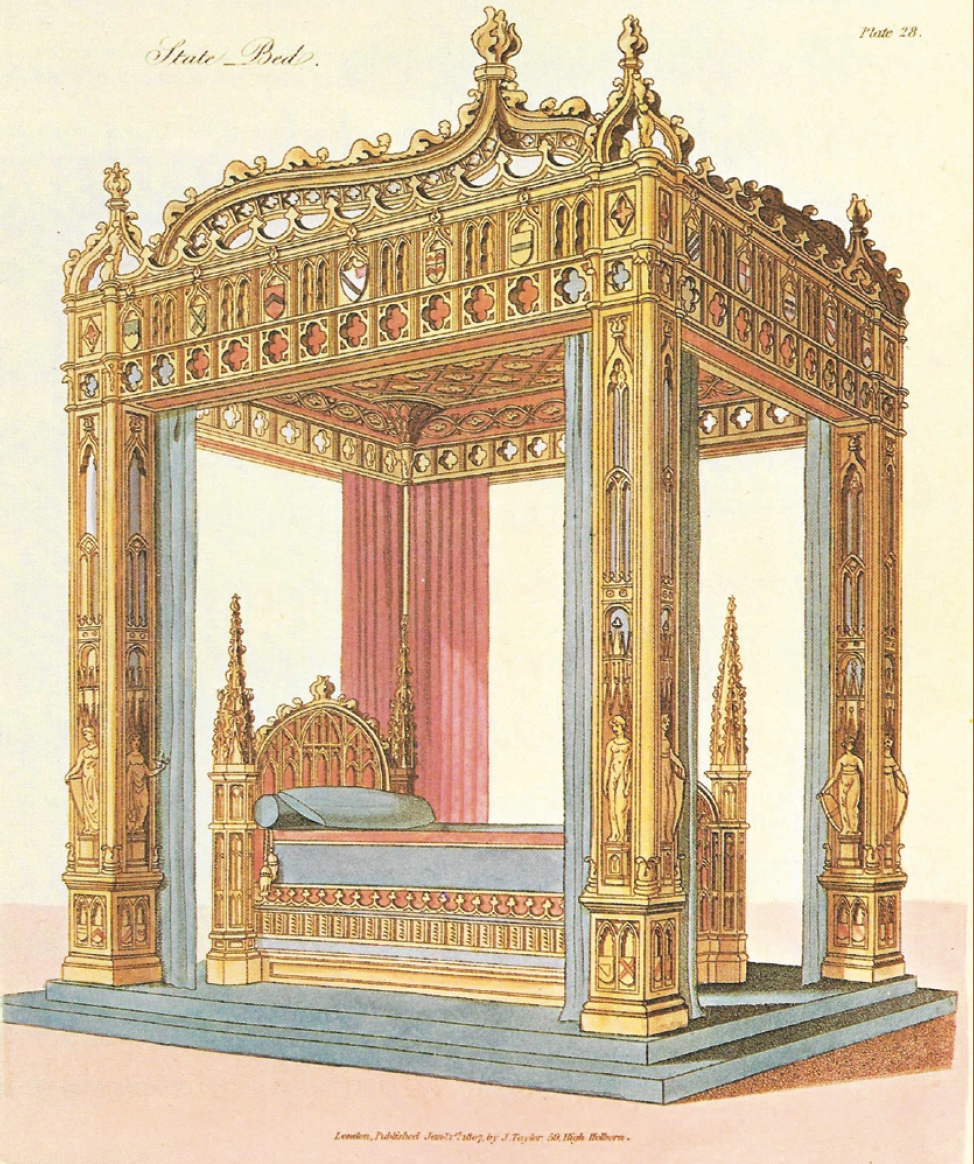
As the nation’s wealth increased the country saw a growing merchant and middle-class keen to reflect their status in opulent fashion and furnishings. An 1807 example of this glorious gothic state bed taken from George Smith’s Household Furniture is a perfect example – although how much of a “household” item it would have been is open to interpretation.
A.W.N. Pugin
Moving further into the first half of the 19th century we have to consider the importance of Ackermann’s Repository of Arts, an illustrated periodical published between 1809 and 1828 and, in effect, the Regency version of today’s World of Interiors.
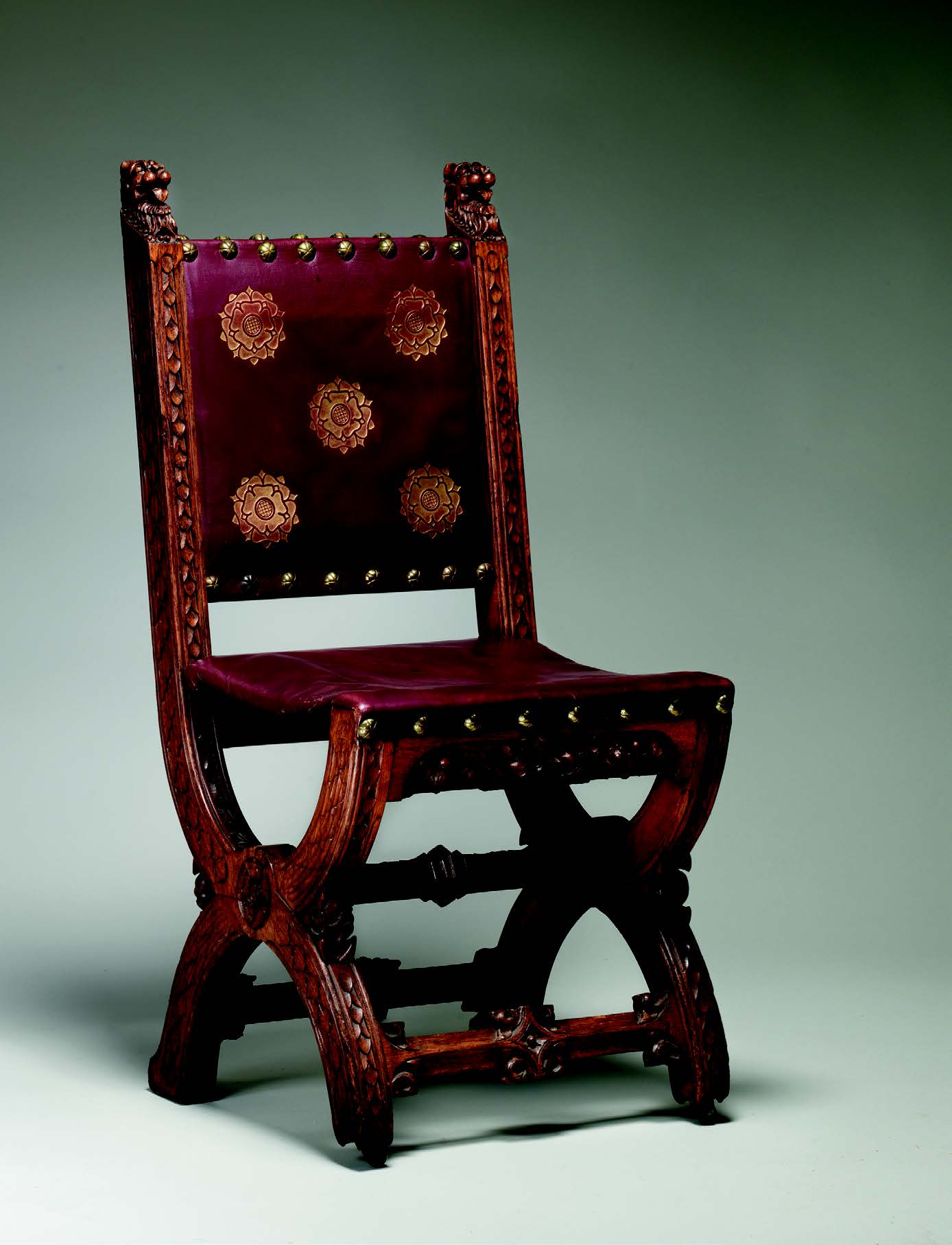
It broadly spanned the time from the publication of Thomas Hope’s neo-classical and Egyptian-inspired designs of 1807 to the progressive, and hugely influential, gothic designs of Augustus Welby Northmore (A.W.N.) Pugin (1812-1852) in the 1830s.
It was Ackermann who published a book of Pugin’s gothic furniture which was so important that the style is described as “Puginesque” in homage to him. Pugin’s most well-known endeavour, with Sir Charles Barry, was probably the Houses of Parliament, rebuilt after a devastating fire in 1834. Pugin also designed many pieces of furniture for inside the palace including the above chair, which originally furnished the Speaker’s House which was completed in 1859.
Gothic hall chairs
However grand some of these designs may be, they all share very similar iconography to those in the back of one of the oak hall chairs in question.

The chairs are beautifully constructed in brown oak with deeply sabred back legs which are so reminiscent of the Regency period. The detail extends to the front legs which are not just tuned but octagonally turned, which would have taken the maker more time and therefore cost more to the client.
I date the chairs to the reign of William IV (1830-1837). They are just that bit more restrained than the later examples. The gothic style continued into the Victorian period when as a style its popularity started to decline.
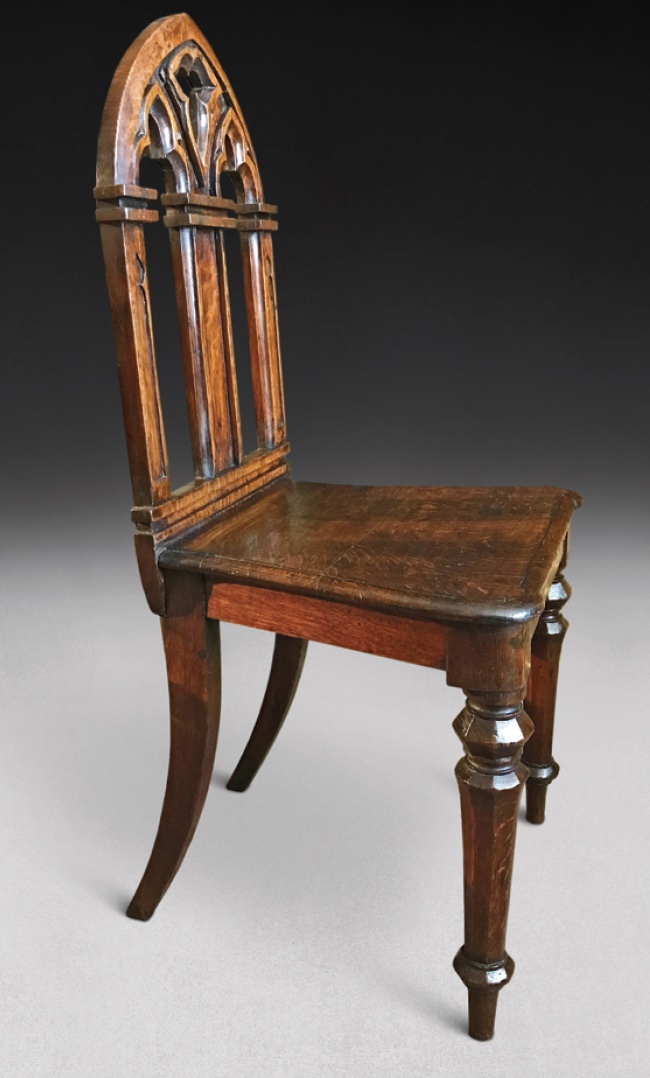
I hope, like me, you appreciate the joy of these chairs which I cannot help but smile at every time I look at them.
David Harvey is the owner of Witney-based W R Harvey & Co. (Antiques) Ltd. For more details go to the website www.wrharvey.com

